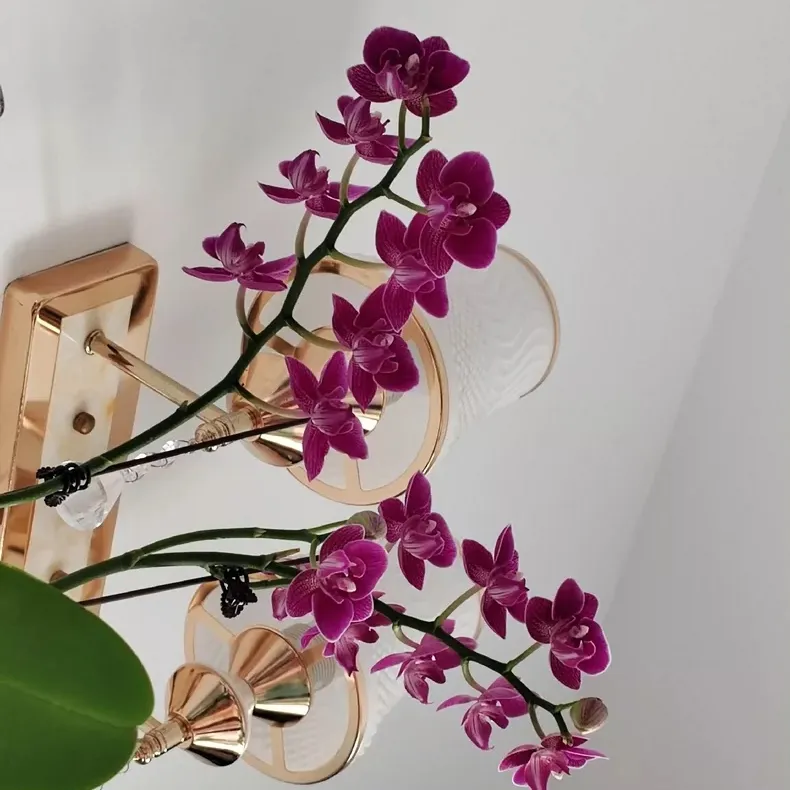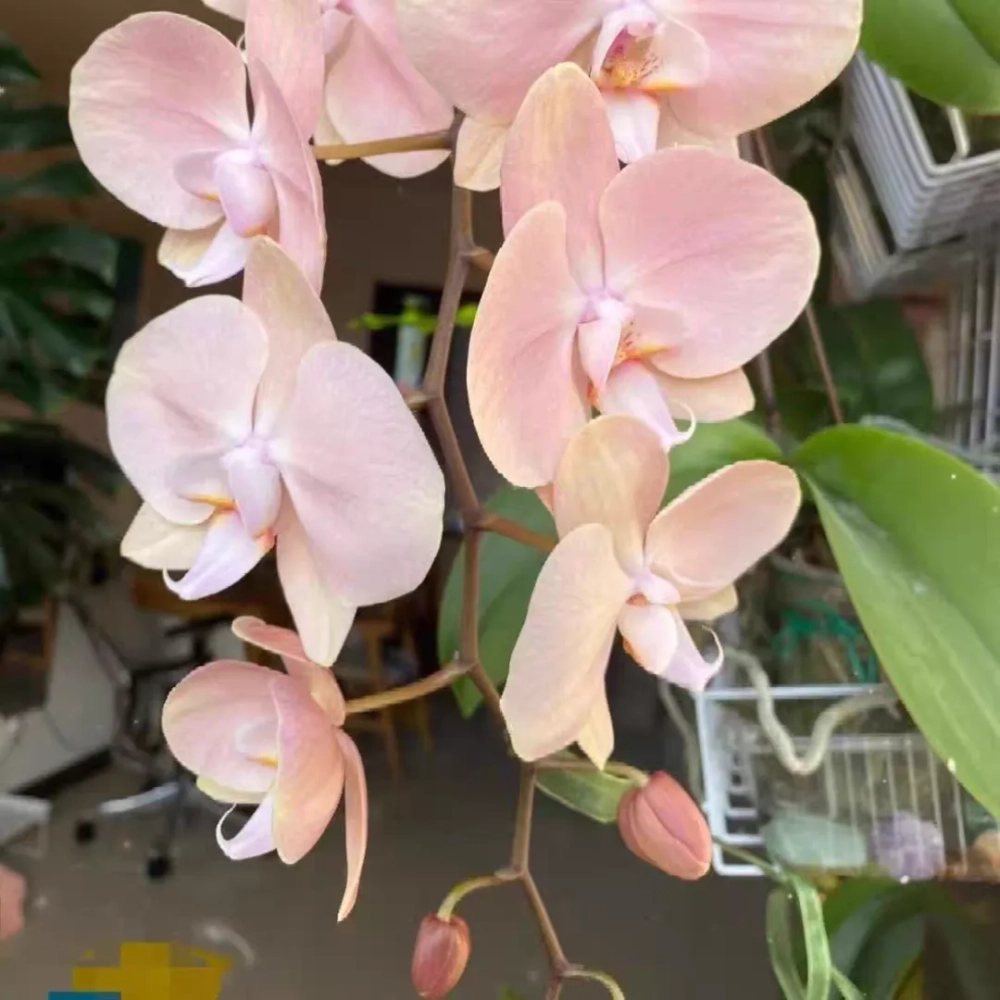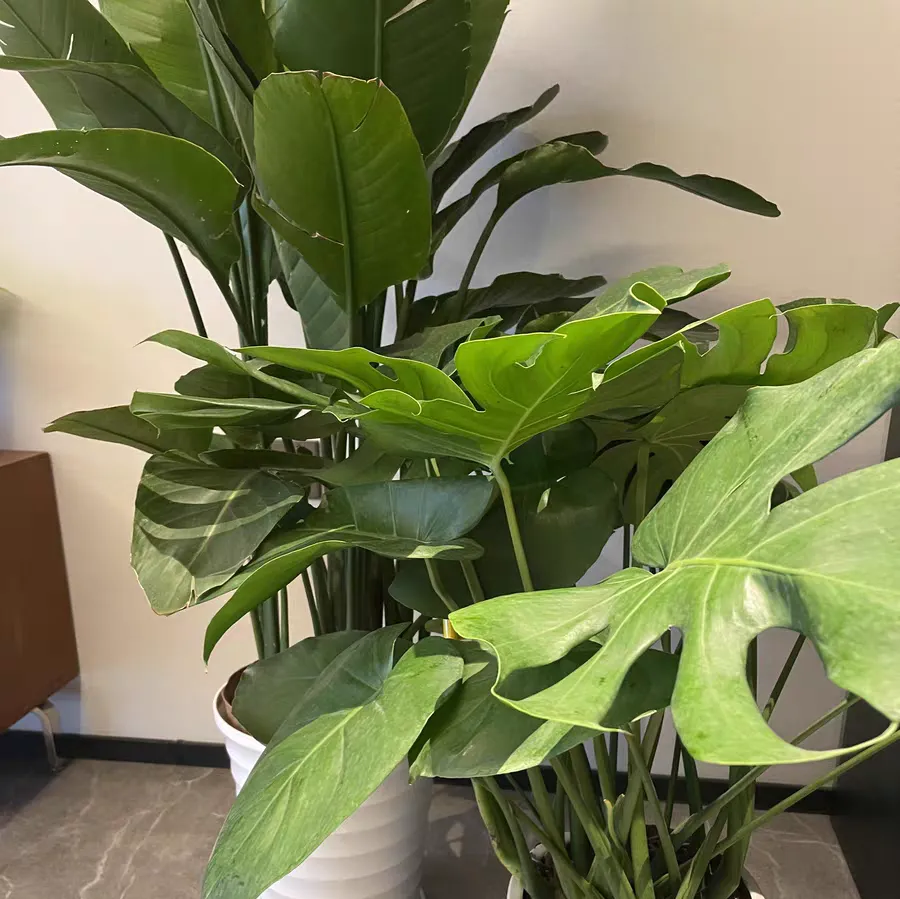Today, I'd like to introduce to you this Phalaenopsis orchid that seems to come with its own filter effect — "Red Wine".
The Phalaenopsis "Red Wine" is of a small to medium flower type. Its petals are in a velvety rose red color, with an aurora white edge inlaid along the rim. Compared with the Phalaenopsis "Man Tian Hong", the "Red Wine" has a deeper and more mellow color. Whether it's inserted in a bottle as a single plant or arranged in a bouquet, it can instantly enhance the style of the space.
The Phalaenopsis "Red Wine" has multiple branches on one stem. A single pot can bear 8 to 12 flowers, and its flowering period is quite long. After the first wave of flowers withers, cut the flower stem short, leaving 2 nodes at the base of the flower stem. It may rebloom after 2 months.
When you encounter yellowing leaves during the daily maintenance of the Phalaenopsis "Red Wine", don't be in a hurry to throw it away! You can deal with it according to the cause of the problem. If the young leaves turn yellow first and the tips of the leaves turn black, it's because you water too frequently, which suffocates the roots. You should immediately take the plant out of the pot, cut off the rotten roots, soak the sphagnum moss in carbendazim solution for 30 minutes, let it dry, and then repot it. Don't water it within 3 days, place it in a ventilated area, and resume supplementing water with the pot-soaking method in a small amount after 1 week. If the old leaves turn yellow first and the leaves wrinkle, it's due to water shortage and dry air. Put the whole pot into clean water and soak it for 10 minutes, then drain the water. Spray water around it with a spray bottle every day to keep the humidity above 60%. In the dry season, you can place a water tray with ceramsite at the bottom of the pot to increase the humidity slowly. If the tips of the leaves are scorched and the new leaves are shriveled, it's because of excessive fertilization. Flush the substrate with clean water twice to dilute the remaining fertilizer, suspend fertilization for 1 month, and then apply fertilizer only once a month thereafter.
Daily Maintenance:
Watering: Mainly use the pot-soaking method. Water when the sphagnum moss is completely dry. After soaking for 5 minutes, pour out the accumulated water and avoid getting the base of the stem wet.
Substrate: Sphagnum moss + bark. Repot once a year in spring. Throw away all the old sphagnum moss to prevent the growth of bacteria.
Light: Provide 2 to 3 hours of scattered light every day. In winter, it can be exposed to a little more sunlight appropriately, and in summer, it must be shaded.
Temperature: In winter, the temperature should not be lower than 12°C, and in summer, it should not be higher than 30°C. Keep it away from the air outlet in an air-conditioned room.
Fertilization: Apply phosphorus and potassium fertilizers once a week before the flowering period, and supplement nitrogen fertilizers after the flowers wither. Don't fertilize in the high temperature of summer and the low temperature of winter.
Precautions:
1. Using tap water directly: Use tap water that has been left standing for 2 days or purified water. Otherwise, the scale will block the roots.
2. Watering the center of the leaves: This will lead to stem rot. When the sphagnum moss is dry, soak it from the bottom of the pot or pour water gently along the edge of the pot.
3. Fertilizing during the flowering period: Fertilizing while the flowers are in bloom will cause the flower buds to drop. Supplement the fertilizer after the flowers wither.
4. Cultivating in an unventilated and stuffy environment: The roots will definitely rot if it's on a closed balcony. Open the window for half an hour every day or turn on a small fan to blow at a low speed.
5. Changing the position frequently: Phalaenopsis orchids are sensitive. It's easier for them to grow new roots if they are placed in a fixed position.
Does the Phalaenopsis "Red Wine" have a long flowering period?

Share with
Tagged in :



Leave a Reply